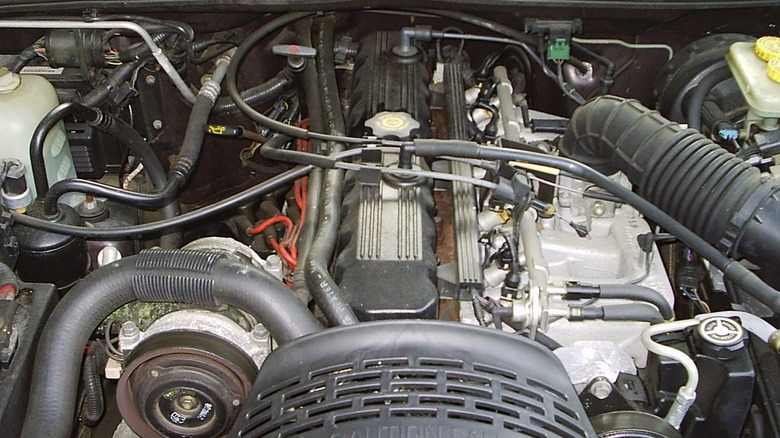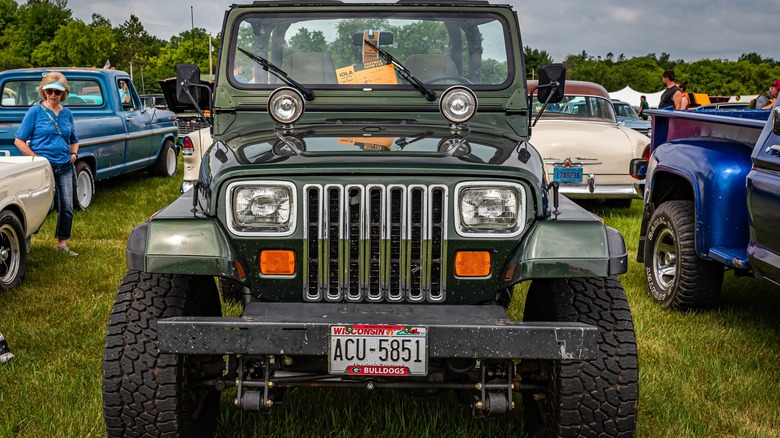A Look At What Made Jeep's 4.0L Engine So Great
The Jeep brand's history stretches back to World War II when Willys Overland built a light troop and gear mover that would grow into the CJ line of utility vehicles after the war ended. Jeep was sold to American Motors in 1969, which was in turn bought by Chrysler in 1987. During Jeep's 70-plus year history, it has used a wide range of engines in its vehicles, from the original flathead four-cylinder that powered the early CJ models to the 392 cubic inch (6.4 liter) hemi V8 that drives the 2024 Wrangler Rubicon 392.
From the 1987 through 2006 model years, the stalwart of the Jeep engine lineup was the 4.0 liter (242 cubic inches) straight six-cylinder. This powerplant often lands on lists of the auto industry's most dependable motors, including SlashGear's rundown of the most reliable inline six-cylinder engines ever. Let's take a look at the history of this beloved engine and what factors have made it such a legend.
The 4.0 replaced the carbureted 4.2 liter I6
Jeep began offering straight six options in Jeepsters and pickups as early as 1948, including high-torque 232 and 258 (4.2 liter) cubic inch versions beginning in the 1970s. Jeep put the 258 in CJs, Wagoneers, pickups, Jeepsters, and the YJ series Wrangler, which was introduced in 1987. Jeep introduced the 4.0 liter (242 cubic inch) fuel-injected version of the I6 that same year, first offering it in XJ Cherokee models. The 4.0 first appeared in Wranglers in 1991, and throughout the 1990s, it was also available in Comanche pickups, Wagoneers, and Grand Cherokee models. Jeep dropped the 4.0 after the 2006 model year, replacing it with a 3.8 liter V6.
The 4.0's popularity is largely due to its famed reliability. These motors can be expected to deliver more than 200,000 miles of dependable operation with regular maintenance, and one Cherokee owner logged 500,000 miles on his Jeep's original 4.0-liter engine.
These engines run so long without issues because of the simple internal design. The 4.0 doesn't have an overhead camshaft like many other engines; instead, it uses a system of hydraulic lifters, rods, and rockers to operate the valve system. The 4.0 was also one of the first I6 engines to feature multi-port fuel injection, a system developed by Renault and Bendix. 4.0-liter engines with this system are often referred to as "Renix" engines. In their long-term review of the 1997 Cherokee, Motor Trend said of the 4.0 I6, "Much love is expressed by owners for the torquey 4.0-liter/190-horsepower inline-six. This long-lived OHV powerplant has a reputation for getting people where they need to go, whether it be through a blizzard or ascending a craggy mountainside."

